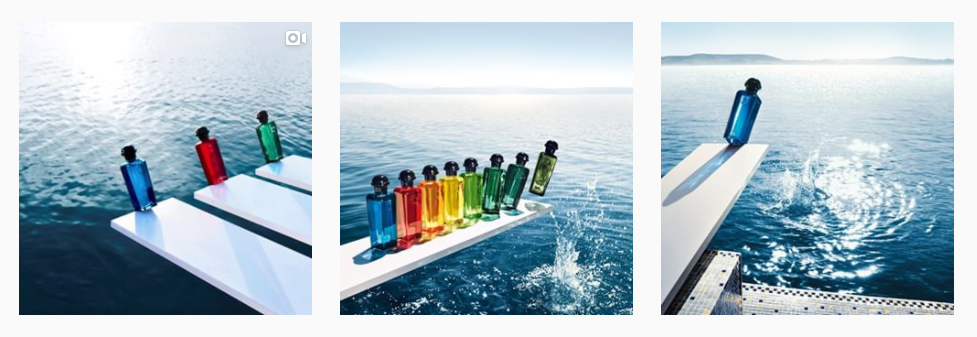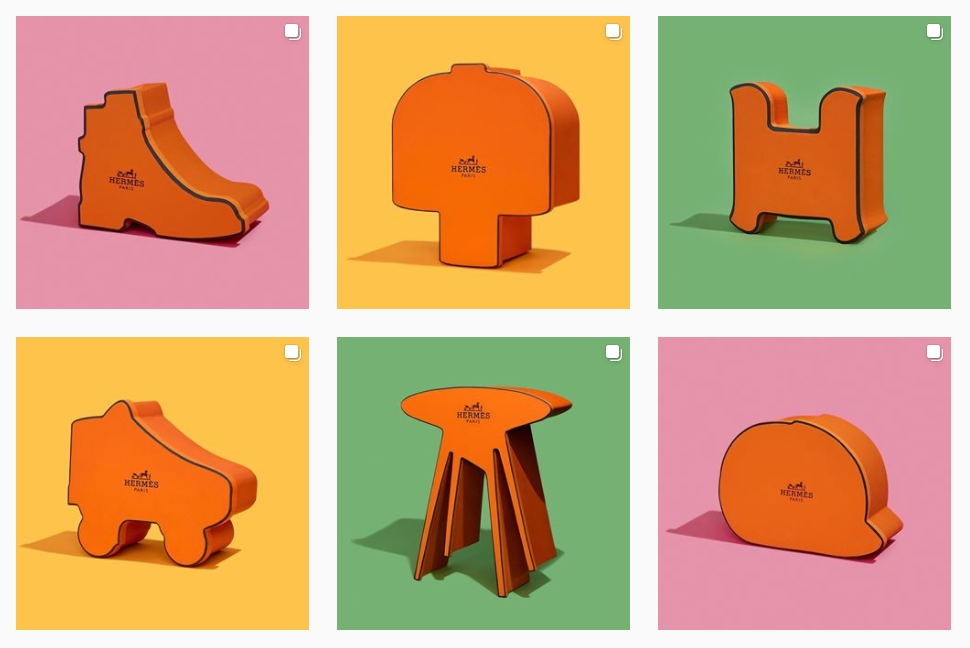
Digital
Hermès Online Channels Are Booming. Luxury Brands Should Take Note.
by
Limei Hoang | August 25, 2020
While the latest results from Hermès showed revenues fell, one surprising bright spot for the French luxury goods company was the growth of its online channels. We discuss the key lessons that other brands can learn from its example.
Last month, Hermès reported its earnings for the first half of the year. While revenues dropped by 25 percent from €3.3 billion ($3.9 billion) to €2.5 billion, one surprising bright spot was the growth of its online channels, where sales continued to rise even as its stores reopened.
The French luxury group reported that around 75 percent of their online customers were new, and its growth rates in e-commerce didn't go down once stores reopened. “These aren't sales that didn't take place in stores. It took place online instead,” Hermès Executive Chairman Axel Dumas said in a conference call. “These are new customers, new customers who came to our online stores, so there wasn't any sort of cannibalisation. We see that our website in China continues to grow very strongly in second quarter despite of the fact all the Chinese stores have also reopened.”
According to data analysed by DLG’s (Digital Luxury Group) Search team, Hermès saw a 35 percent year-on-year increase in English search demand during January to June, compared to the same period last year . Unsurprisingly, bags were the most searched for items – up by 40 percent year-on-year, representing 12 million searches and a 3.6 million increase year on year, followed by fragrances and shoes.
The data also showed that Hermès Birkin bag was the main volume driver, up 59 percent year-on-year, representing 7 million searches and a 2.6 million increase year on year, followed by the Kelly bag and the Hermès Apple watch.
At a time when many companies are having to rethink their business models and digital strategies in light of the global pandemic, how has Hermès managed to attract a whole new legion of online customers during one of the most difficult periods for the luxury industry?

The first thing to note is the unique positioning that Hermès possesses within the luxury market. “Hermès has always had this unique ability to position themselves as the iconic brand it is, but also embrace newness and technology and remain relevant and modern,” said Robert Burke, chairman and CEO of Robert Burke Associates. “They are strategic in everything they approach and they were very strategic with their online over the years.”
A big part of Hermès’ success online is down to how the company viewed - since the beginning some years ago - its digital offering as complementary to its core business, rather than a threat, said Mario Ortelli, managing partner at luxury advisors Ortelli&Co.
“The big lesson that anyone can learn from Hermès, is that a brand that is probably considered to be one of the most exclusive and risk-averse in the luxury space, embraces the digital world and takes a great advantage from it. Hermes saw that digital was not something that would undermine its brand equity, but something that was a real platform to reach and reinforce their positioning among consumers.”
Think Differently
Another area where the company has always remained strong is in its ability to generate buzz about its brand and products. “They have a different way of marketing,” said Burke. “They really rely on their own placement, through their website and social media like Instagram and they’re been very good. Other brands spend an enormous amount of money on advertising and PR events and they seem to kind of stay away from that from what I can see.”
The company is not afraid to embrace a different point of view either. Its Instagram account often embraces more creative and quirky elements as seen with its 'Braid Runner' posts, where a person’s hair was placed over images of a horse on a laptop and braided, a play on its equestrian heritage or its recent fragrance launch, where perfume bottles are seen balanced on the edge of a diving board. “The strength of Hermès lies in its very distinctive creative content which allows them to post about any types of collections from horse riding equipment to lipstick while staying consistent and continue to build the brand. It is something that a lot of brands struggle with,” said Anne-Sophie Scharff, Social Media Project Manager at DLG.

Freedom to Create
It is this focus on being creative, that helps to generate excitement and buzz around its products. “The creative process was very important for me,” said Dumas. “It was very important to keep the same dynamism of creation, whatever be the situation so preserve the freedom of creation. We don't have a marketing department in Hermès. And so, our creators, our designers are free to create, are free - they don't start with a price point to arrive at something.”
While the result is a large selection of products – Hermès has around 50,000 product codes - this is counterbalanced by freedom of purchase. Meaning the company allows its store managers to choose their own assortment of products to sell in their individual stores, whose choices are also informed by their customers’ preferences.
This customer first approach is a method that it has always applied in its stores and can be seen through its online interactions. “They are good at relating to the customer,” said Burke. “It stays fresh, it stays relevant, and they have ongoing videos. On their retail side, to keep it interesting, they’ve opened new store concepts like the one in the Meat Packing district in Manhattan, where they have unique products just for that store, whether that be the Hermès skateboards or limited edition products. And that, I think has been important.”
Invest for the Long-Term
However, it is important for companies to note that that building a strong online presence like Hermès takes time and that companies cannot expect to reap immediate rewards.
Dumas acknowledges that Hermès had worked on its online omnichannel strategy for many years, and the continuous rollout of its platform has taken 4-5 years. For a company that generates 90 percent of its sales from its own stores, online represents a small but growing portion of its sales and one that is dependent on building a strong ecosystem – through its production, logistics and technology.
“E-commerce isn't all virtual. There are very real things underpinning it all,” said Dumas. “We're not talking about two separate universes. There's always something physical underpinning online.”
Investments in e-commerce need to be made the for long-term, if companies want to see real tangible results. “The weight of e-commerce revenue is growing however luxury market is down overall and e-commerce is not even close to compensate for the loss of physical sales for many brands, said Benjamin Dubuc, DLG's Head of Search.
“While brands need to invest strongly in e-commerce, they have to keep in mind that there is no magic,” he added. “Building an e-commerce strategy and ecosystem is costly, and they will need large investments in technology, logistics, talents and media budget to acquire and retain customers. It is worth noting that as the market is shrinking, and new brands are going online, the cost to acquire customers is going up at the same time.”
Join Luxury Society to have more articles like this delivered directly to your inbox
Discovery is a Luxury Experience
Part of Hermès’ success reckons Burke, particularly during the pandemic, is that consumers have had a great deal of time to research and look at potential purchases. “There’s an overall feeling that when you do spend money, you want something that has a sense of investment and longevity,” he said.
“The feeling of quick and disposable fashion has not been successful during this time period… Hermès has year round product ranges, they have classic styles, many things are limited editions, and so there was a demand for their sales, and the reality is they have a variety of price points. It’s a luxury experience in a time when many of the other competitors are not providing a luxury experience.”
Hermès noted that customers coming to its e-commerce sites were using it as way to discover its products and interestingly, there was no price limit on what an online customer would spend. “Someone came to the e-commerce site and their first purchase at Hermès was a sofa,” said Dumas. “They bought online from Hermès. So, there's no limit.”
Ortelli believes the company could go even further in terms of expanding their online offering. “If I look at the challenges that Hermès is facing, one of them would be to bring some of its products lines to the same level of perceived exclusivity as its key products,” said Ortelli, noting that its watches and jewellery had not been as successful as its leather goods or accessories, unlike its peers Louis Vuitton and Chanel.
However, it is unlikely Hermès will be rushing to develop these segments anytime soon. “With Hermès, they are measured in everything they do,” said Burke. “They’re not reactionary. They are not one to be reactionary, and so I think that they are taking in what they have learned over this period with their online business and I would imagine that they will capitalise on it but only in the most strategic way.”
“I don’t think you are going to see a blast of new product on the Hermès’ website, part of their allure has always, always been that its limited. And scarce. And that’s like giving candy to a baby in the luxury industry to the luxury consumer,” he added. “They have always been, even more so now, in an enviable position compared to the other luxury brands and brands in general. In many ways they are the antithesis of commercial. And I think that really works for them.”
Cover Image: Hermès. Photo: Courtesy.

